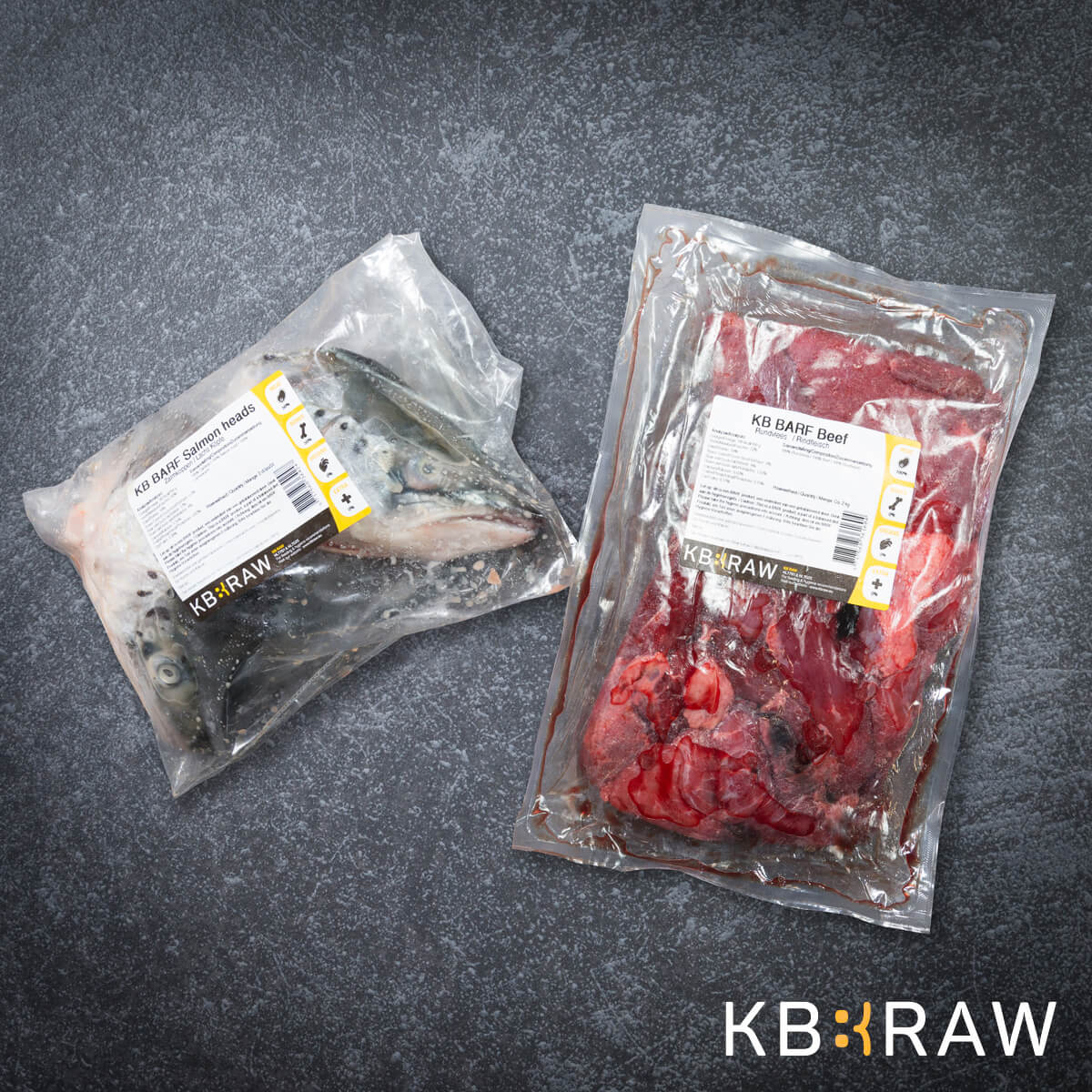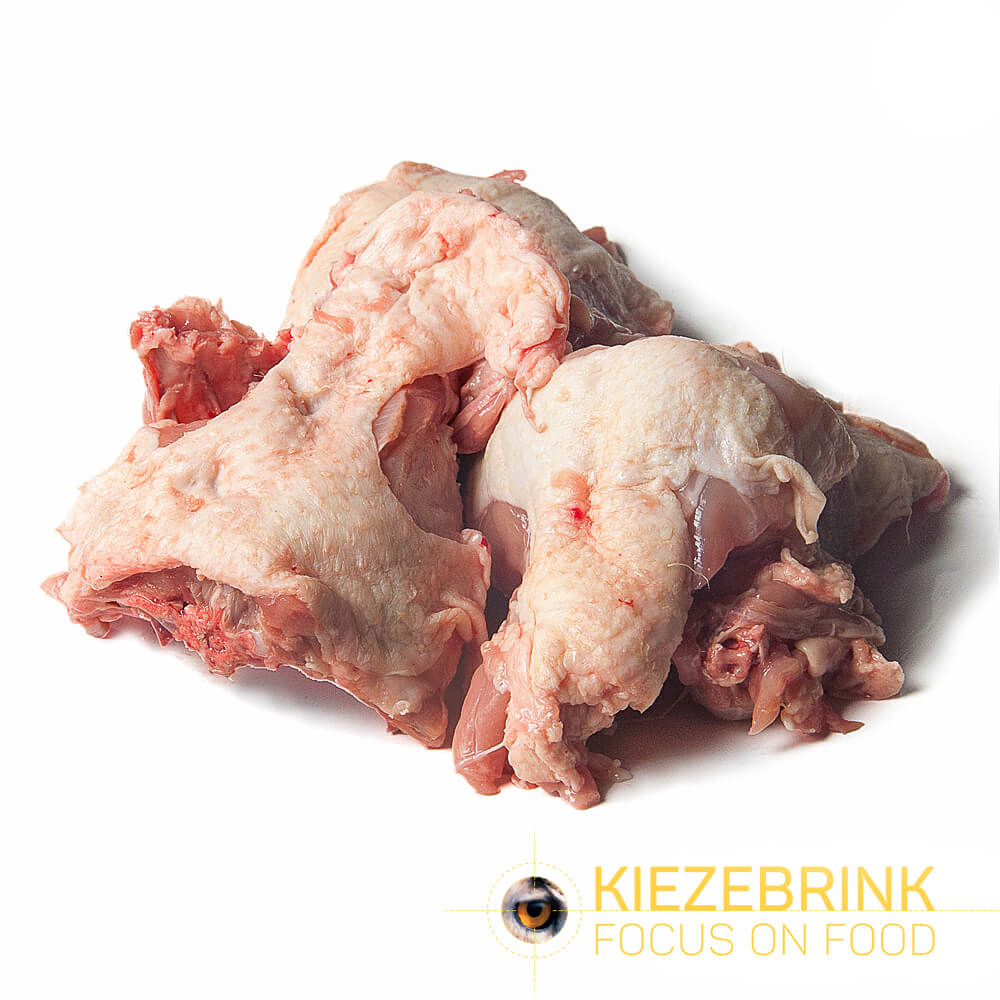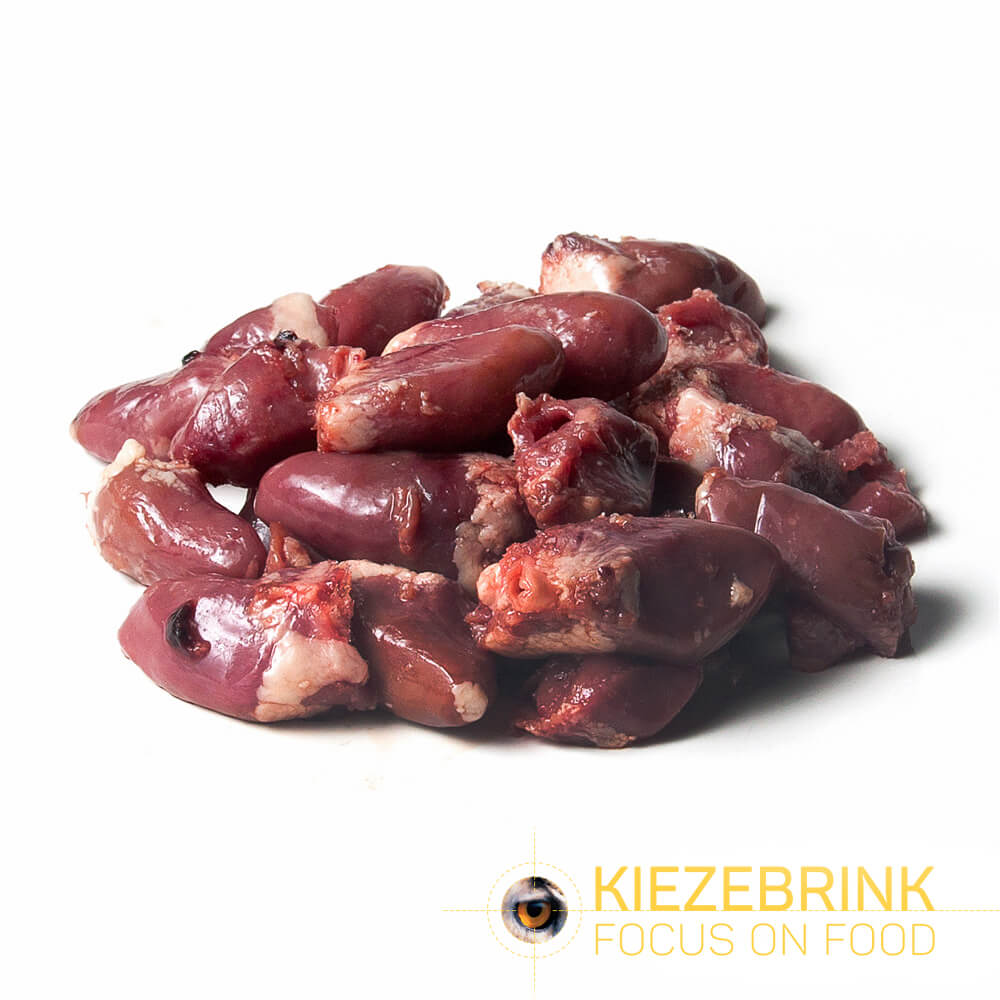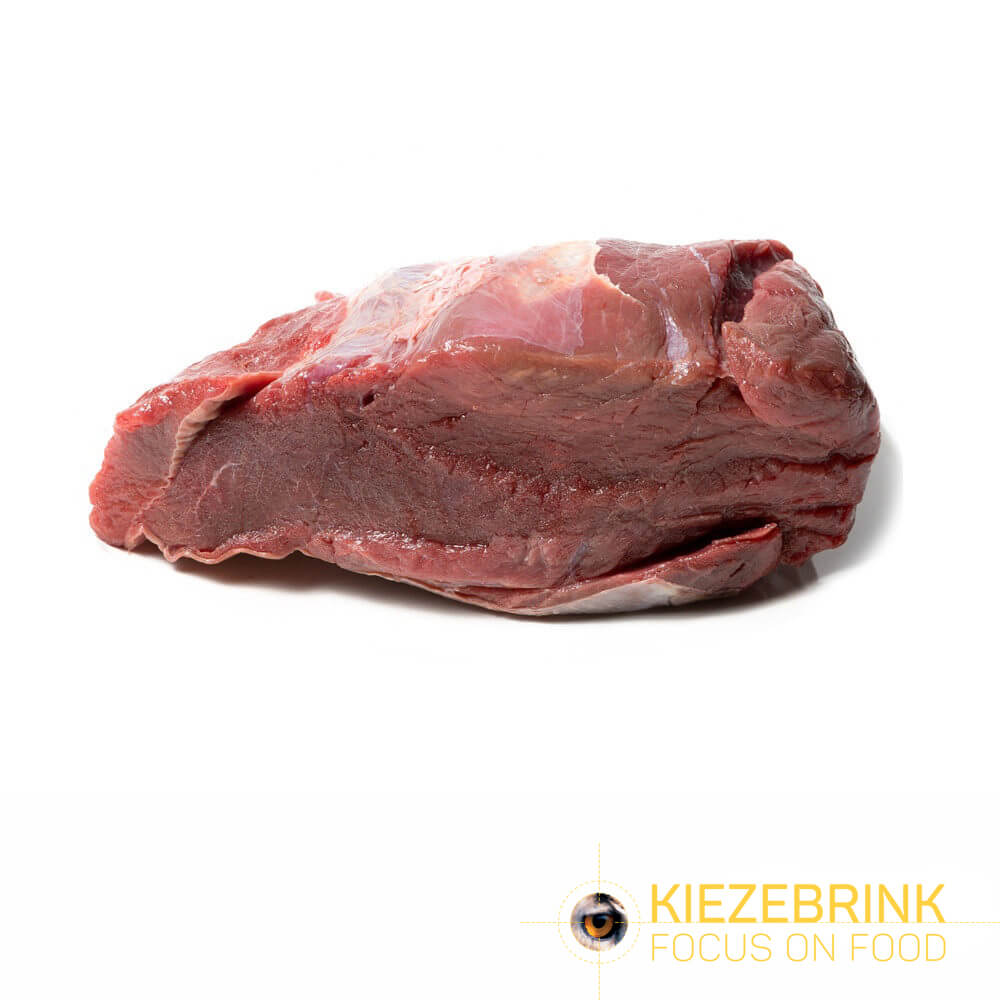
The BARF (Biologically Appropriate Raw Food) method comprises a diet of differing raw product components,
which are:
Meaty bones:

On average, 50% of the diet should comprise of meaty bones. This is an important source of calcium and
phosphorus in the diet. Meaty bones can be used from many kinds of animals. However, it’s important to
pay
attention to the hardness of the bones.
Below is an overview of the hardness of the meaty bone products sold
by Kiezebrink. One and two bones means soft bone, which is suitable for beginner raw eating dogs and
cats.
Products with three and four bones are suitable for dogs with experience with BARF. Five bones means
very
hard bone structure which is for experienced raw eating dogs which is too hard to digest (and therefore
only
suitable for chewing).
1 Bone
Chicken necks
Chicken backs
2 Bones
Duck necks
Meaty rabbit bones
Guinea Fowl carcasses
Salmon bodies
3 Bones
Turkey necks
Rabbit heads
Pheasant carcasses
Salmon heads
5 Bones
Beef ribs
Deer fleshy ribs
|
1 Bone |
2 Bones |
3 Bones |
4 Bones |
5 Bones |
|
Chicken necks
|
Duck necks
|
Turkey necks
|
Roe fleshy ribs
|
Beef ribs
|
|
Chicken backs
|
Meaty rabbit bones
|
Rabbit heads
|
|
Deer fleshy ribs
|
|
|
Guinea Fowl carcasses
|
Pheasant carcasses
|
|
|
|
|
Salmon bodies
|
Salmon heads
|
|
|
Not all meaty bones contain the same ratio of meat to bone; the ideal ratio would be 1:1. This ratio is important
because bone is an important source of calcium and meat is a source of phosphorus. Calcium and phosphorus should
be available in the diet at a certain ratio (1:1 – 1:2) to be absorbable. When a bone contains little meat, it
must be complemented with extra meat. Another factor is the structure of the bone; hard bone contains more
calcium than soft bone. It’s therefore important to pay attention to the faeces of your dog or cat. When the
faeces are hard, this usually means that there is too much bone in the diet or the bone structure is too hard.
Organ meat:

A balanced diet contains on average 15% organ meat. It’s important to vary the diet with differing organs
such as; heart, tripe/rumen, kidneys, lung and liver.
These organs vary in amino acid profiles and vitamin and mineral contents. Liver for example is a very
important source of vitamin A, which is why we advise to feed liver but no more than 5%.
Vitamin A (and D, E and K) are fat soluble and can therefore be overdosed in a diet. Furthermore, liver
can
have a laxative effect on animals if fed in too high a volume.
When a dog or cat has too loose a stools this may be an indication of too high a proportion of organ meat
in
their diet.
Muscle meat:

Muscle meat is an important source of amino acids, zinc and vitamin B12. We advise to feed on average 30%
muscle meat.
This part is very dependent on the amount of meat on the meaty bones that are fed.
Others:
Finally the diet can be completed with seeds, vegetables, fruit, eggs and oils. These additions can supply
extra vitamins, minerals, fibres and fatty acids. When for example fish is not fed every week, this can be
compensated by adding fish oil.
Types of Meat
It’s not only necessary to vary with muscle meat, bones, organs and additional products, but also to vary the
types of meat. More information about this is found in the 'variation for a balanced
diet' advice section.
Whole Prey Diets
Another feeding method is whole prey feeding. When feeding according to this method typically whole prey items
are fed. Prey species which are usually used are: fish (sprats, mackerel, herring, sardine etc.), day old
chicks, mice, quails, pigeons, guinea pigs, rabbits and chickens. It is important to remember when feeding
according to this method variation is still very important.





